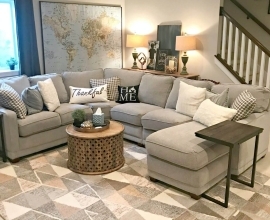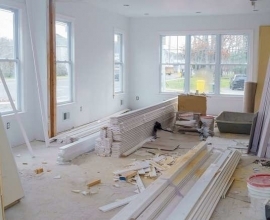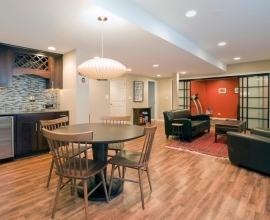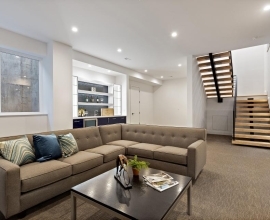BRIANA TOMKINSON: Planning to fix-and-flip? Here are five home-renovation mistakes
Depending on the real estate market, buying a fix-and-flip or a handyman special may seem like a good strategy to get into the housing market. Although HGTV makes it all look so easy, the reality can be complicated, expensive and risky.
Here are five money-losing mistakes homeowners make when they renovate:
Not scaling your renos to your goals
Even professional appraisers recognize that home renovations aren’t just about return on investment (ROI). According to the Appraisal Institute of Canada, renovations pay off in three ways:
Increasing the selling price of your home
Increasing your enjoyment of your home
Maintaining the worth of your property
If your goal is to increase the value of the home enough to make a profit on a quick flip, gutting the kitchen, building an addition or replacing all the floors may actually end up losing you money in the end.
Likewise, if you’re renovating a house you intend to stay in, you may regret cheaping out or cutting corners on the finishing if it sours your enjoyment of your home.
How much should you spend? According to home stager Gabrielle Grawey, it depends on the overall value of the home and what is typical within your neighbourhood.
“The budget of someone’s house dictates the value of the renovation,” Grawey said. “If you’re gutting your kitchen or bath and replacing with luxury when the current value of house doesn’t match that, you can expect you will lose a good part of that investment.”
Assuming all upgrades are investments
It’s not an investment unless you can have a reasonable expectation of making a profit. Some upgrades are more likely than others to boost your selling price.
According to a homeowners’ guide produced by the appraisal institute, the renos with the best payoff for sellers are kitchen and bath upgrades, repainting, cosmetic updates to dated or worn finishings, and decluttering.
The association notes that the renos that bring more joy than ROI are things like finishing a basement, adding a garage, sunroom or deck, along with fencing and landscaping. Better not to sink your money into these upgrades unless you’re planning to stay a while and enjoy them.
A rule of thumb: the longer you intend to stay in a home, the more reasonable it is to spend money renovating it. Even if the renos don’t increase the value of the home by enough to cover what you spent, if you experience greater happiness while living in the home, that may be enough payoff to justify the cost.
Assuming you’ll make your money back when you sell
According to Remodeling Magazine’s annual survey measuring return on investment on home renovations, pretty much every major reno will probably be a money-losing one. The U.S. magazine compares the average cost for 22 common remodelling projects with the typical return upon the sale of the home in 136 American markets. In the 2019 survey, the highest ROI was for a garage door replacement, which recouped 97.5 per cent of the investment on average — in other words, losing only 2.5 per cent.
That doesn’t mean there’s no way to make money on a flip. If you do some of the work yourself, there’s more room to profit. Local market conditions will also have an impact. In a hot housing market, a renovated house may sell more quickly or be more likely to get multiple offers, which could also boost ROI.
If your goal in renovating is to spruce up a home for sale, your best bet is to start with the essentials: take care of basic home maintenance, repair what’s broken, get the house professionally cleaned, and give the house a fresh coat of paint in neutral colours. Leave major renovations to the next owner.
Piecemeal renovations
We’ve all seen those older homes with vintage mid-century tiles in the bathroom (that now seem kind of awesome), different shades of cheap laminate in each bedroom, real hardwood in the hallway, carpet in one room and a brand-new Ikea kitchen. It makes you wonder, what is this house’s identity, anyway?
When it comes time to sell, patchwork renovations can be worse than no upgrades at all, said Tanya Nouwens, a RE/MAX Royal Jordan realtor and home stager.
According to Nouwens, it’s crucial to keep renovations in context with the home and neighbourhood. If the whole home is in a 1980s time warp, upgrading only the kitchen or bathroom can make everything else seem shabbier.
“If the whole house is dated, renovating the kitchen draws attention to other parts that are shabby,” Nouwens said. “If a home is in a time period, I leave it in that time period.”
Putting lipstick on a pig
It’s fun to go shopping for tile, upgrade kitchen countertops or pretty up your yard with new landscaping. Yet if you blow your budget on cosmetic upgrades and neglect essential repairs or maintenance, you’ll not only end up scaring away potential buyers, but you could potentially face frighteningly high repair bills later on.
When it comes to maintaining the worth of the property, replacing the roof, updating climate-control systems, replacing windows and doors, updating electrical systems and repairing structural defects are the most important priorities, according to the appraiser’s institute.
Make sure these unsexy but essential aspects of your home are in good order. Buyers will often be willing, even keen, to update an old kitchen or repaint rooms to suit their taste, but no homeowner looks forward to replacing shingles or shoring up a buckling foundation.
The worst renovations for ROI, according to Remodeling Magazine
Upscale master suite addition
Job cost: $271,470
Resale value: $136,820
Cost recouped: 50.4 per cent
Mid-range backyard patio
Job cost: $56,906
Resale value: $31,430
Cost recouped: 55.2 per cent
Upscale bathroom addition
Job cost: $87,704
Resale value: $51,000
Cost recouped: 58.1 per cent
Mid-range master suite addition
Job cost: $130,986
Resale value: $77,785
Cost recouped: 59.4 per cent
Upscale major kitchen remodel
Job cost: $131,510
Resale value: $78,524
Cost recouped: 59.7 per cent
Source: https://bit.ly/3bwAdcH







